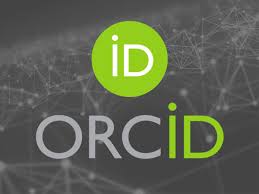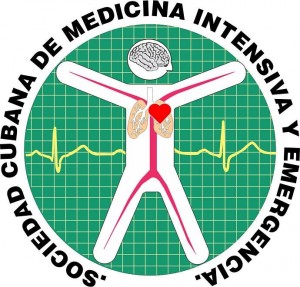Eosinofilia en la Unidad de Cuidados Intensivos / Eosinophilia in Intensive Care Unit
Palabras clave:
eosinofilia, síndrome de hipersensibilidad a fármacos, cuidados intensivos, fisiopatologíaResumen
Introducción: la evidencia existente no es concluyente en cuanto al recuento de eosinófilos como marcador de mortalidad en UCI, sin embargo, los mecanismos fisiopatológicos que se generan con la activación del eosinófilo conducen a complicaciones cardiopulmonares y tromboembólicas potencialmente mortales.
Desarrollo: se realizó una revisión narrativa acerca de la eosinofilia en los pacientes críticos. Mediante una búsqueda sistemática en PubMed, Medline, Cochrane, y RIMA, de artículos en inglés y español, desde el 1 de enero del año 2000 al 30 de abril del 2017 tomando como palabras clave eosinofilia, cuidado crítico, fisiopatología y tratamiento. Se realizó una revisión crítica de la evidencia mediante la metodología GRADE (Grades of Recommendation, Assessment, Development, and Evaluation), calificando la calidad de la evidencia y el nivel de recomendación. Se incluyeron un total de 25 trabajos. Dos revisores por separado participaron de la selección por conveniencia de las publicaciones, de acuerdo a los títulos y el contenido de los resúmenes, los cuales debían adaptarse a los objetivos de la presente revisión. Cuando se encontraron divergencias, se estableció la inclusión o el descarte por consenso. Se verificaron las listas de referencias de todos los estudios previamente identificados.
Conclusiones: la eosinofilia puede considerarse como un parámetro de orientación diagnóstica en el paciente crítico y es de gran utilidad en los diferentes escenarios.
Descargas
Citas
1. Escobar E.J, González J.E, Carrillo E. B, Guerra K.C, Mercado R. Eosinophil count at intensive care unit admissionwas not predictor of hospital mortality: results of a case control study. Journal of intensive Care. 2015; 27 (3): 1-6.
2. Salido E, Cabañas P, Moraleda J.M. Síndromes hipereosinofílicos. Mastocitosis sistémicas. Medicine. 2012; 11 (21); 1298:1308.
3. Chabot R, George T. Leukocytosis. International Journal of laboratory hematology Int. Jnl. Lab. Hem. 2014; 36: 279- 288.
4. Klion A. Eosinophilia: a pragmatic approach to diagnosis and treatment. Hematology Am SocHematolEduc Program. 2015; 1: 92 - 97.
5. Gotlib J, Tefferi A. Word Health Organization-defined eosinophilic disorders: 2015 update on diagnosis, risk stratification, and management 2015. American Journal of Hematology. 2015; 99 (11): 1077 – 1089.
6. Falchi L, Verstovek S. Eosinophilia hematologic disorders. Immunol Allergy Clin N Am 2015;35: 439- 452.
7. Klim A. How I treat Hypereosinophilic syndromes. Blood 2015; 114 (18): 3736-3741 consultado el 15 Junio 21017, disponible en : http://www.ncbi.nlm.nih.gov/pmc/articles/PMC2773488/
8. AcharyaKR, Ackerman SJ. Eosinophil granule proteins: form and function. J Biol Chem. 2014; 289 (25): 17406-17415.
En: http://www.ncbi.nlm.nih.gov/pmc/articles/PMC4067173/
9. Malikk A, Batra J. The antimicrobial activity of human eosinophil granule proteins: Involvement in host defense against pathogens. Critical Reviews in Microbiology 2012; 38: 168 -181.
10. Connell E M; NurtamThB. Eosinophilia in infectious Diseases.Inmunol Allergy Clin N Am 2015; 35: 493: 522.
11. Merino C, Martinez F, Cardemil F, Rodriguez J R. Absolute eosinophilis count as a marker of mortality in patients with severe sepsis and septic shock in an intensive. Journal of critical care. 2012; 27: 394 -399.
12. Garnacho J, Huici M J, Gutiérrez A, López I, Márquez J.A, Macher H, Guerrero J M, Puppo A. Prognostic and diagnostic value of eosinopenia, C-reactive protein, procalcitonin, and circulating cell-free DNA in critically ill patients admitted with suspicion of sepsis. Critical Care 2014; 18:R116.
13. Mejia R, Nutman Th. Evaluation and Differential Diagnosis of Marked, persistent eosinophilia. Seminars in Hematology 2012; 49 (2): 149:159.
14. Santhamoorthy P, Alexander K., Alshubaili A. Intravenous immunoglobulin in the treatment of drug rash eosinophilia and systemic symptoms caused by phenytoin. Annals of Indian Academy of Neurology ,15(4): 320–322.
15. EL Omairi N., Abourazzak S., Chaouki S., Atmani S., Hida M. (2014). Drug Reaction with Eosinophilia and Systemic Symptom (DRESS) induced by carbamazepine: a case report and literature review. The Pan African Medical Journal 2014; 18: 9.
16. Singh J, Dinkar A, Atam V, Gupta K, Sahani, K. Drug reaction with eosinophilia and systemic symptoms syndrome associated with Nitrofurantoin. Journal of Research in Pharmacy Practice 2016; 5(1): 70–73.
17. Lee J.-Y, Seol Y-J, Shin, D-W, Kim, D.-Y, Chun H.-W, Kim B.-Y, Jang A.-S. A Case of the Drug Reaction with Eosinophilia and Systemic Symptom (DRESS) Following Isoniazid Treatment. Tuberculosis and Respiratory Diseases 2015. 78(1): 27–30.
18. Kaswala D. H. Drug Rash with Eosinophilia and Systemic Symptoms Syndrome Due to Anti-TB Medication. Journal of Family Medicine and Primary Care 2013, 2(1), 83–85.
19. Fathi AT, Dec WG, Richter JM, Chen YB, Schwartzenberg SS, Holmavang GH, Hasserjian RP. A 27 YearOld Man with Diarrhea, Fatigue, and Eosinophilia. N Engl J Med 2014; 370: 861- 872.
20. O Connell E, Nutman T. Eosinophilia in infectious diseases. ImmunolAllergy Clin N Am 2015; 35: 493: 522.
21. Coffin S, Benton S, Lenihan D, Naftilan A, Mendes L. EosinophilicMyocaarditis – An unusual cause of left ventricular Hypertophy. Am J Med Sci 2015; 349 (4): 358- 362.
22. Praveen A, Weller P. Eosinophils and Disease pathogenesis. Seminars in Hematology 2012; 49 (2): 113-119.
23. Butterfield J.H, Weiler C.R. Treatment of Hypereosinophilic Syndromes – The First 100 year. SeminHematol 2012; 49 (2): 182-191.
24. Valent Peter. Pathogenesis, classification, and therapy of eosinophilia and eosinophil disorder. Blood Reviews 2009; 23: 157-165.
25. Rothenberg M, Klion A, Roufosse F, Kahn J E, Weller P, Simon H, at el. Treatment of Patients with the Hypereosinophilic Syndrome with Mepolizumab. N Engl J Med 2008; 358: 1215-1228.







